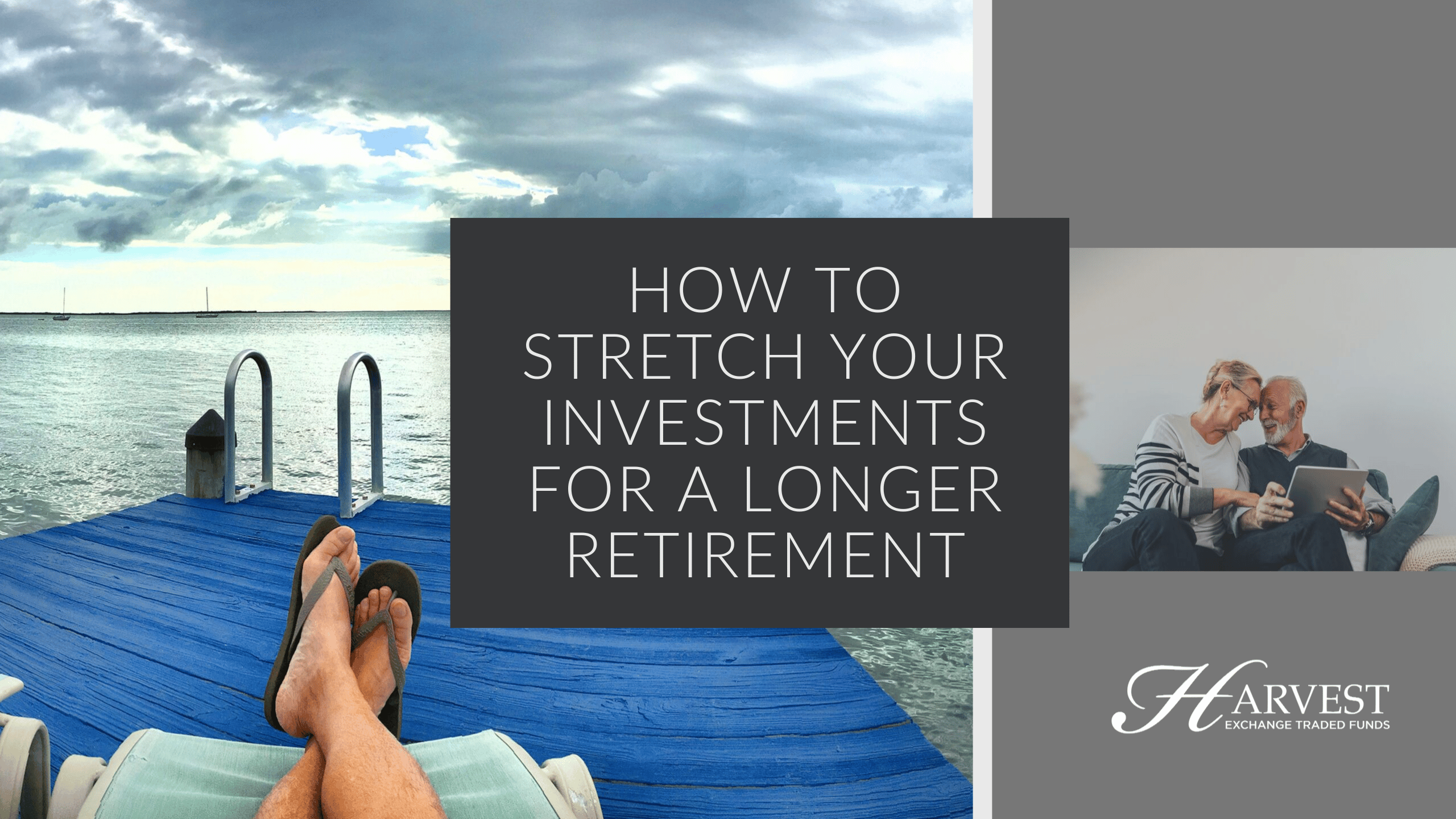
The saving and investing strategy you use to accumulate money during your working life is different from the one you use to manage your resources in retirement. Understanding the differences, and adapting your approach, is even more important in an era of very low interest rates. After inflation and taxes, many fixed income investments are a breakeven proposition at best. That means looking elsewhere for returns that meet your objectives.
In a Q&A, Harvest Portfolio Group’s Managing Director David Wysocki explores some of the options.
How do pre and post-retirement investing strategies differ?
It’s a great question. During your working life, your strategies are designed to accumulate assets. So, you’re looking for places where you can get maximum growth over a long period. Most investors look at stocks, mutual funds and ETF’s. Capital appreciation is the primary objective. In retirement your goal changes to preserve what you have and find ways to generate cash to live on.
Can you explain?
In your accumulating phase, a broad stock market index ETF, or an equity mutual fund as examples, could be a great way to go. Your assets should grow over the long-term. The average annual return of the S&P 500 index over the past 25 years has been 9.63% and the average annual return over the past 90 years has been 8.84%. For Canadian stocks, the average returns are a bit lower, but the trend is the same. So, stocks could be an attractive place to be.
As you move into the stage in life where you are drawing down your assets, cash flow becomes important. By that, I mean generating enough money from your savings to get a monthly amount you can live on.
So, the strategy you have been using doesn’t work. The reason is that an average stock market dividend yield is 2%. That doesn’t leave you with any real return after inflation and taxes.
Are GICs, or other fixed income investments a good choice?
Well, 30 years ago you could buy a GIC, or a 30-year bond, and get an 8% to 10% interest rate. So, $1 million was generating $80,000 to $100,000 a year. Today, GICs are yielding 1.6%, so that million dollars is yielding $16,000 a year. Not many people can live on that when you adjust for inflation the real return becomes that much smaller.
What is the solution?
You may have to start looking at different options, ones that are designed to deliver the cash flow you need. You may have to stop looking at fixed income as capital preservation and stocks as strictly growth. You may have to look for opportunities where stocks can generate income that was once delivered by fixed income.
Doesn’t that increase your risk?
I think we may have to change the way we view risk. High risk could be viewed as the risk of not meeting your objectives. If your investment objective is cash flow, investing in a five-year GIC is exceptionally risky. True, it will preserve capital which reduces one risk, but it introduces a different level of risk which is not having enough cash.
Although equity strategies aren’t guaranteed, they’re designed to generate a cash flow that reduces the risk of encroaching on your capital. In a down market, $100,000 can drop by 10% or more, but that loss is not realized until you sell. Share prices go up and down, but if the company’s you own are the best of the best, they will continue to pay dividends in good times and bad.
As well, certain types of fixed income are actually riskier than stocks. What I mean is that in order to generate the cash you need in an era of low interest rates; you go down the credit quality scale. So, you are no longer investing in RBC or Scotiabank bonds. You’re looking at the depressed assets, or junior energy names, or emerging market fixed income with higher yields. That increases the risk level.
What does Harvest offer investors?
Our product lineup is designed for investors who look to generate a monthly income. We focus on company’s who are leaders at what they do, that have strong cash flow, strong balance sheets and a commitment to dividend growth. We overlay that with a covered call strategy that generates additional cash flow and reduces volatility. For investors who are cash flow oriented, the reduction of volatility and enhanced income could be ideal solutions.
Can you give examples?
Our Harvest Brand Leaders Plus Income ETF (TSX: HBF, HBF.U) invests in 20 of the world’s largest brands. Our Harvest Tech Achievers Growth & Income ETF (TSX: HTA, HTA.U) invests in 20 of the largest technology names.
The idea behind them is to invest in sectors or themes that have long-term growth, with leading companies who pay dividends that grow over time. We overlay that with a covered call strategy.
What are covered calls?
Covered call options are a strategy to reduce risk. It has become widely accepted in today’s period of low interest rates as a way to safely generate more income. You sell a portion of the potential rise in stock price in exchange for a fee. The fee limits the gain a bit, but it also acts as a cushion if share prices fall, because you keep the fee no matter what. Covered call options are a Harvest specialty.
Is there a tax benefit to these strategies?
Covered calls are tax efficient because the option premium is distributed in the form of a capital gain to investors. Capital gains are taxed at a lower rate than foreign dividends or, in general, tax paid at your marginal tax rate.
What type of investor would benefit from the Harvest approach?
I believe the strategies could be suitable for any investor where income is the primary objective. That could be a 20-year-old who’s looking at generating income, or a 60-year-old who’s looking at retirement where cash flow is a primary objective.
How would you sum up the challenge for investors?
I think all investors understand that there is risk investing in the stocks. Assuming you’re comfortable with that, Harvest can reduce your risk by an delivering higher income with a covered call option strategy that acts as buffer in a down market.
For more on Harvest ETF’s click here.
The views and/or opinions expressed in the blog are of a general nature and are for informational purposes only. Blog contents should not be considered as advice and/or a recommendation to purchase or sell the mentioned securities or used to engage in personal investment strategies. Investors should consult their investment advisor before making any investment decision.












